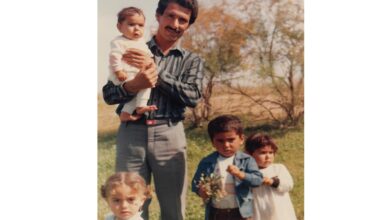Association for Defending Victims of Terrorism – Sarhang Hamasaeed, Director of Middle East Programs in United States Institute of Peace, expressed concern about ISIS threat in now and future.
He writes, addressing the ramifications of ISIS’s violent legacy still requires collective action, but there is a light at the end of the tunnel.
More than three years after its military defeat in Iraq and Syria, ISIS is a downgraded threat. While the extremist group’s capacity has been drastically reduced and millions of people have returned home, ISIS has managed to continue attacks year after year despite no longer holding territory.
Meanwhile, some of the most difficult human legacies — the challenges facing the people the ISIS conflict left behind — are still with us, with no end in sight.
While the number of people still affected by the conflict undoubtedly reaches into the millions, the nuances of each group are important when it comes to understanding their status and formulating a response to address their problems and the lessons learned to inform future action.
One of the thorniest problems ISIS has left behind is the thousands of displaced persons affiliated or perceived to be affiliated with ISIS, who are languishing in camps or outside their areas of origin in Iraq and Syria.
There are many people that currently treat ISIS as if is it’s yesterday’s problem. That in and of itself is a problem. Some see what remains of the ISIS conflict as a security issue that the Iraqi Security Forces and the Syrian Democratic Forces (SDF) can handle. Others think there are more important priorities, like Russia’s war in Ukraine or great power competition.
But ISIS is the problem of yesterday, today and tomorrow. We have a multi-generational challenge on our hands — not just when you look back on the history of extremism in this region over the past 30 years, but also looking forward at how the next 10 to 20 years might unfold.
When it comes to displacement stemming from the ISIS conflict, there is no better encapsulation of the challenges we face than al-Hol. The al-Hol camp in northeast Syria is one of the most complex manifestations of the human legacies of ISIS, with about 57,000 people from 60 countries currently living there, mostly women and children. Between al-Hol and the nearby Rozh camp, there are roughly 40,000 children (thousands are orphans) among this displaced population.
How We Talk About al-Hol Impacts Resolving the Problem
Analysts, government officials, NGO leaders and members of the community have a wide range of descriptions for al-Hol, calling it a “ticking time bomb,” the “Guantanamo of the Middle East,” an “ISIS Depot,” “ISIS University,” or “the Caliphate,” among other names. Some use these references in an attempt to raise the urgency of the need to address the crisis, while others use it to state that the camp’s residents are dangerous.




